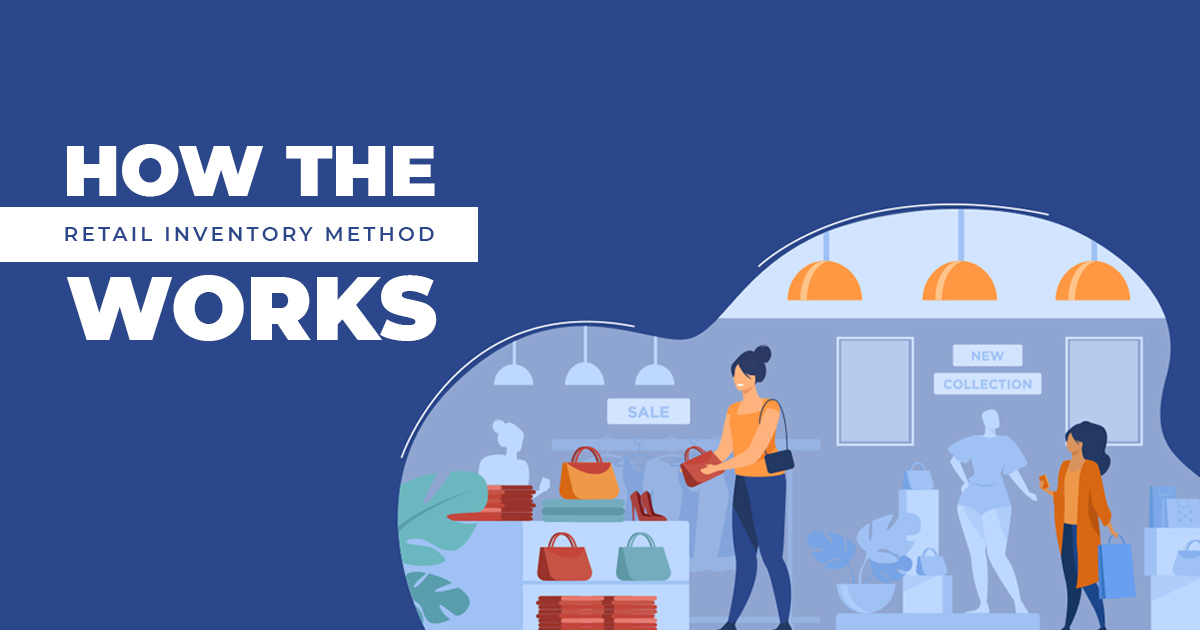
Keeping track of your inventory is a critical step in running a successful business. It enables you to understand your sales, when to order more inventory, how to manage the cost of your inventory, and how much of your inventory makes it into customers’ hands rather than being stolen or broken. This article will discuss the retail inventory method and how you can use it in managing inventory for your business.
What is the Retail Inventory Method?
Businesses use an accounting method called the retail inventory method to estimate the value of their inventory. It calculates a store’s ending inventory balance by comparing the cost of inventory to the price of the merchandise. The retail inventory method employs the cost-to-retail ratio, in addition to sales and inventory for a period.
When there is a direct relationship between the price at which you purchase merchandise from a wholesaler and the price you sell it to customers, you may use this type of inventory method.
Let us set an example. Let’s say your clothing store marks up every item you sell by 100% of the wholesale price. Then, you can use the retail inventory method accurately. However, if you decide to mark up some items by 30%, some by 45%, and some by 60%, you may find difficulty in using this particular inventory method.
Now, you should consider that some items in a retail store are likely to have been shoplifted, broken, or misplaced. With that, the retail inventory method can only approximate inventory value. As such, retail stores need to conduct physical inventory valuations regularly. In doing so, they can ensure the accuracy of inventory estimates. Moreover, they can support the retail method of valuing inventory.
How to Calculate Ending Retail Inventory
We can compute the ending inventory value using the retail inventory method by totalling the value of goods available for sale. Note that this would include beginning inventory and any new inventory you purchased.
After that, you need to subtract the total sales for the period from the goods available for sale. You will then get the difference, which you must multiply with the cost-to-retail ratio. The cost-to-retail ratio (or the cost-to-retail percentage) shows how much cost you included in a product’s retail price. It is the percentage by which you marked up goods from their wholesale purchase price to their retail sales price.
Example Scenario
Let’s say a bag costs Php 2,000 to manufacture. Then, you decide to sell it for Php 5,000. You would get a cost-to-retail ratio of 40% (or Php 2,000 / Php 5,000).
Now, let us say that you made a total sales of Php 3,000,000 for the period.
- Beginning Inventory: Php 1,500,000
- New Purchases: Php 500,000
- Total Goods Available For Sale: Php 1,500,000
- Sales: Php 1,200,000 (Sales of Php 3,000,000 x 40% cost-to-retail ratio)
- Ending Inventory: Php 300,000 (Php 1,500,000 – Php 1,200,000)
Advantages of the Retail Inventory Method
ONE: Produces Accurate Inventory Control Records
It helps you know how many units you have sold by comparing the number of units on hand to the number of units purchased. You can get how much is not accounted for in the sales records.
TWO: Simple and Cost-Effective
If you use this method, you will discover it is cost-effective and straightforward. The method also provides a clear picture of how much goods you have sold and how much you need to sell.
THREE: Automatically Updates Inventory
This method automatically updates your inventory whenever you sell an item at the register. It removes the item from the stock and records it as revenue. It performs inventory count in real-time.
Disadvantages of the Retail Inventory Method
Despite the retail inventory method’s primary advantages mentioned above, it also has its disadvantages:
- It can only provide an estimate. As such, you will still have to perform a regular physical inventory count.
- The method only works if you have a consistent markup on all your products sold.
- It assumes that the historical basis for the markup percentage still holds until the present.
Ready to Use the Retail Inventory Method?
So, did you find what you needed to know about the retail inventory method above? Let us know in the comments if you have any more questions about inventory management.
Before you leave, learn how an online inventory system can help improve your inventory management processes. Then, if you need assistance integrating an online inventory management system into your business, contact us at FIFO because we will be more than glad to help!
